If you like spicy Thai curries, you'll love Thai Jungle Curry. It uses Thai jungle curry paste that adds many flavors, and the aroma is delightful! You can make it with fish, seafood, chicken, beef, or vegetarian. It's extra healthy and takes less than 30 minutes to make!
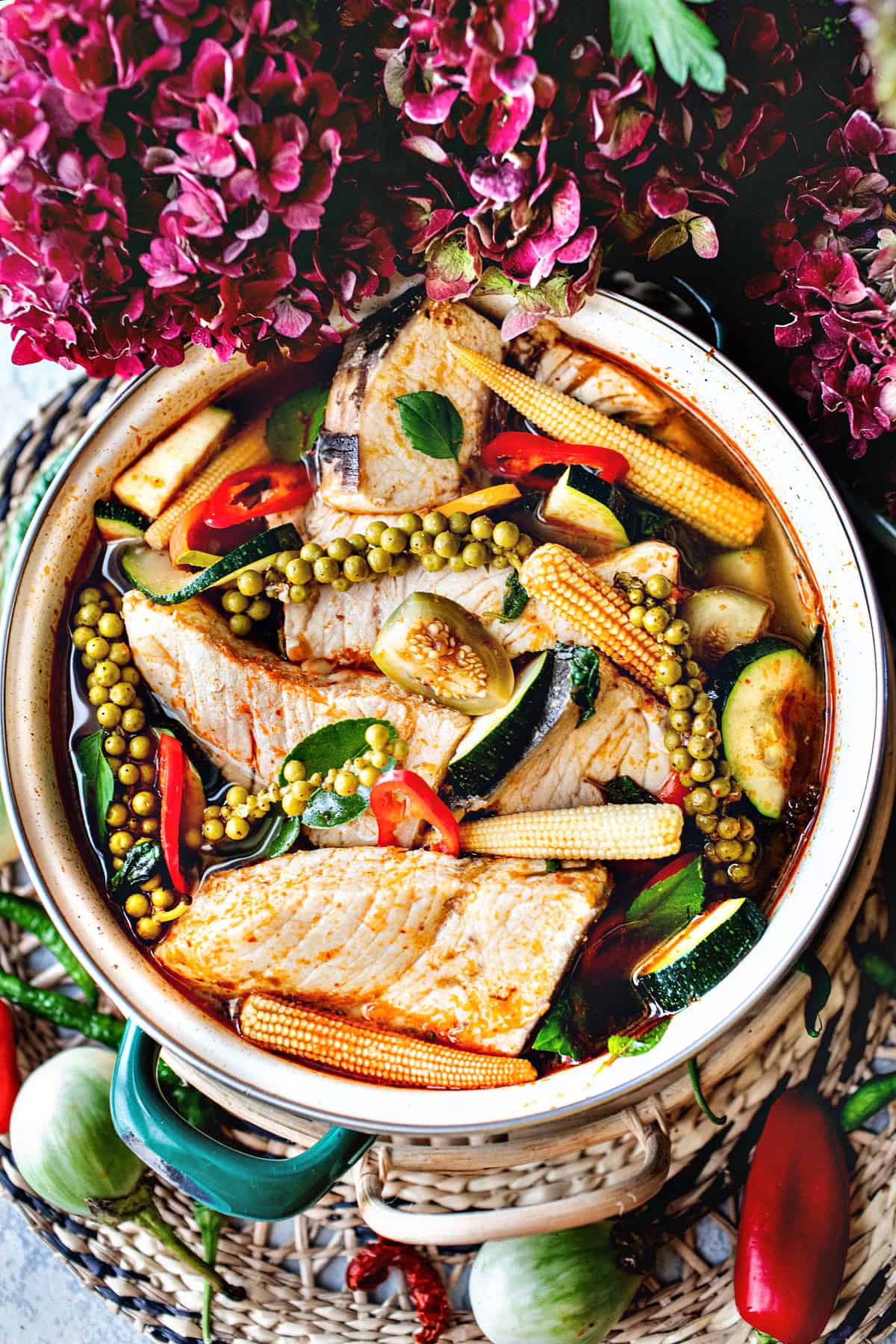
Use this homemade and authentic Jungle curry paste to elevate this Thai Jungle curry. The paste is also perfect for making this spicy Pad Ped Gai, a bold-tasting Thai stir-fry dish with chicken!
For more tasty recipes, try these delicious Thai recipes. Thai green curry with chicken, Thai Massaman curry with beef, Paang curry with chicken, and Thai red curry with cod. For vegetarian curry options, try Thai vegetarian Tom Kha soup, Thai yellow curry with vegetables, and Thai red curry with noodles.
Jump to:
- What is Thai Jungle Curry?
- Why You'll Love This Recipe
- Ingredients for Thai Jungle Curry Recipe
- Unique Herbs for Jungle Curry
- How to Make Thai Jungle Curry
- Garnishing options
- Helpful Kitchen Notes
- Storing Leftovers
- Frequently Asked Questions
- More Thai Curries You'll Enjoy
- The Real Story of Jungle Curry
- Thai Jungle Curry (Gaeng Pa)
- Related Recipes
An important herb that sets this curry apart is the Krachai. Read more about it here.
What is Thai Jungle Curry?
Jungle curry, or "Kaeng Pa," (แกงป่า) is a fiery, aromatic Thai curry with a distinct spicy flavors. Unlike its more popular counterparts in Thai cuisine, like red or green curry, it boldly offers a fiery taste with an intense aroma of strong herbs like Kra Chai and Thai green peppercorns.
Why You'll Love This Recipe
- It's an easy recipe. The recipe requires a few ingredients from the Asian market. Once you have all of them, it is a breeze to make this soup.
- Jungle curry is healthy. This watery curry with no coconut milk has all the healthy components that make it a famous dish in Thailand.
- This recipe is versatile. You can use fish, seafood, meat, or tofu for protein. Choose any vegetables you have from your fridge to add to this curry.
- Adjustable spice levels. You can adjust the spice level slightly by using less jungle curry paste, but be sure to make up for the flavors in fish sauce and sugar.
Ingredients for Thai Jungle Curry Recipe
Your choice of vegetables are flexible and I woulnd't be too stuck on it being authentic when cooking from your home kitchen. My Surin family love adding Kabocha squash and Calabash (Long Asian gourd). Have fun and make what works for you! (:
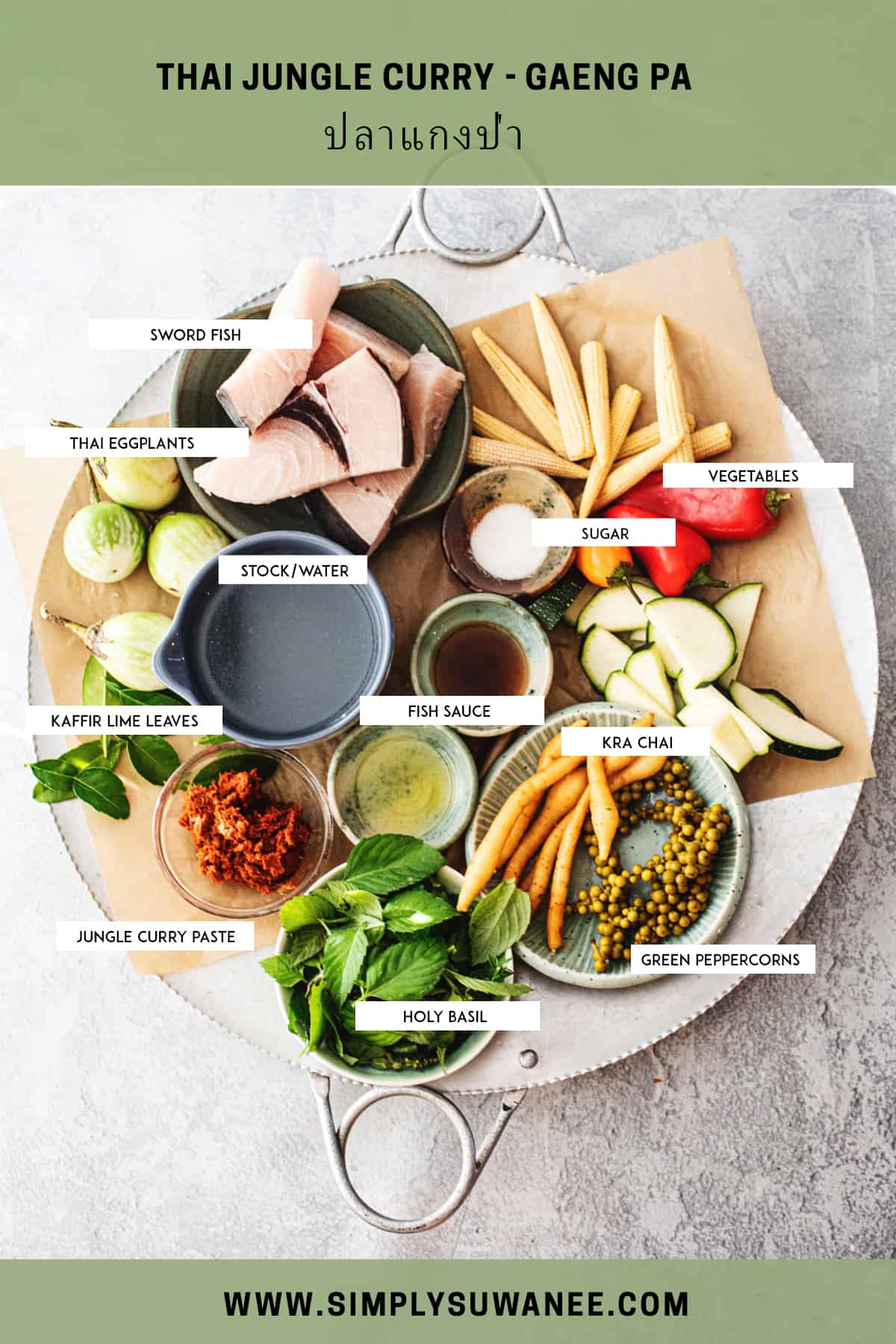
- Oil. Use neutral oils for this.
- Jungle curry paste. I highly recommend making your Jungle curry paste using my recipe. For a store-bought paste, I recommend this Lobo brand.
- Low sodium broth or stock. Vegetables or chicken are best.
- Kaffir lime leaves. Adds a herbaceous taste and intense aroma to the curry.
- Thai eggplants. They are the green round eggplants. They are sometimes labeled Thai aubergines in the Asian market. Chinese eggplants, purple or green varieties, can be used if Thai eggplants are unavailable.
- Baby corn. Baby corn adds a fun and crunchy texture to the curry. Winter melon, gourd, or zucchini are excellent for this curry.
- Red peppers. I used a long red Marconi. You can use sweet bell peppers. Use red serranos or Long Thai chilies for added heat if you are feeling adventurous.
- Swordfish. Any firm white fish will work for this recipe.
- Krachai. Also called finger roots Chinese keys, or lesser ginger. See the image above for reference.
- Thai green peppercorns. See the image above for reference.
- Sugar. White, palm, or brown sugar will work.
- Fish sauce. Adds an umami salty flavor to the soup.
- Holy basil. Substitute Thai basil or regular basil if holy basil is not available. Read a helpful post about Thai herbs here.
Unique Herbs for Jungle Curry
2 unique herbs for jungle curry that you'll want to take notes of. See the images below for reference and use them when you head out to the Asian market to look for them.
Krachai (Finger Roots, Chinese Ginger, or Lesser Ginger)
Using Krachai is a hallmark of Thai Jungle Curry. These finger-looking herbs impart an earth-citrusy aroma that gives the Thai Jungle a distinctive taste and aroma. Find them at the Asian market frozen, whole, or sliced and brined in a jar. See the image below for reference.
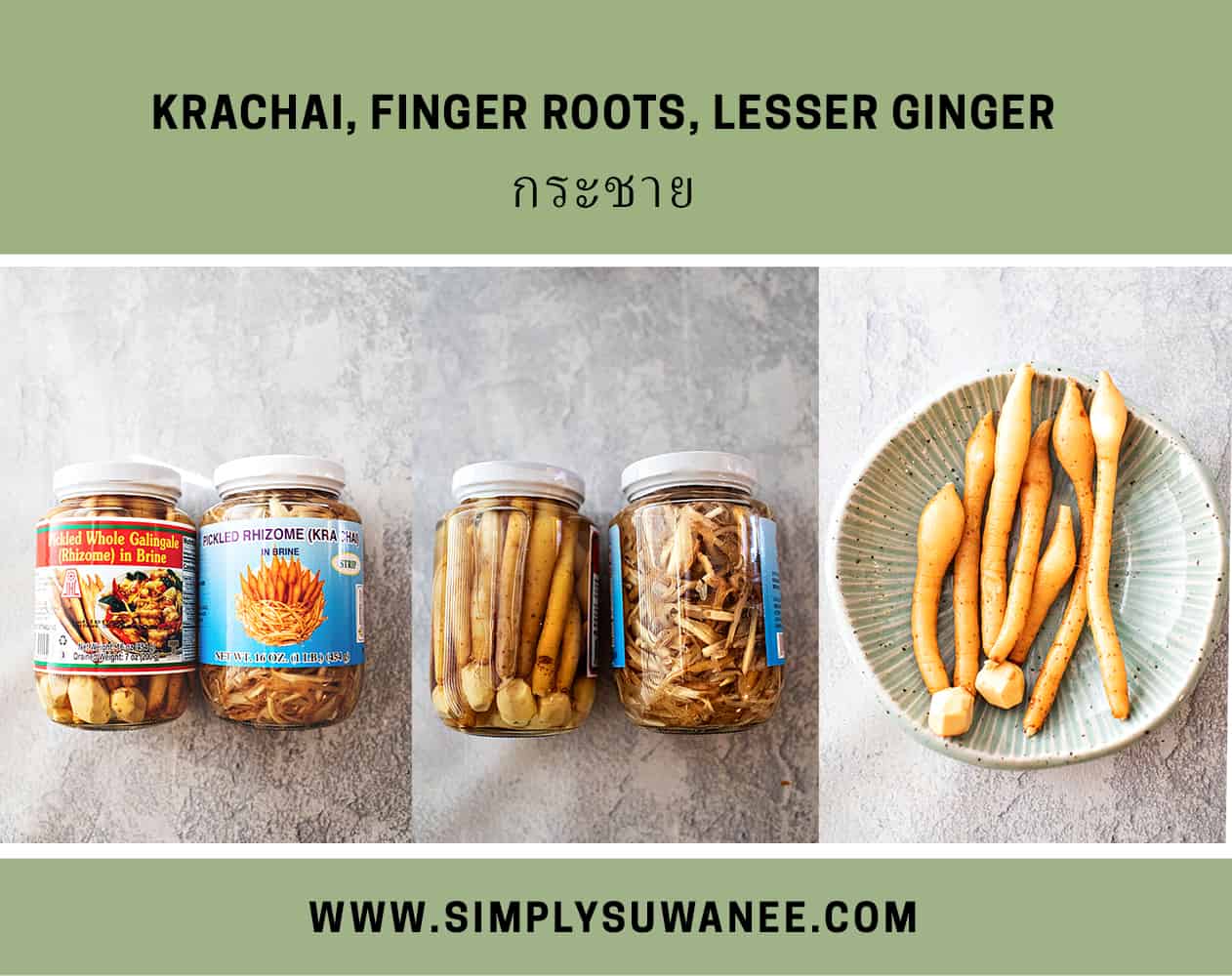
Green Peppercorns
Fresh green peppercorns add a unique heat and earthy flavor to the curry. They are essential to achieving the signature spiciness of Jungle Curry. Fresh green peppercorns are nearly impossible to find in the US. Find them at the Asian market, brined in glass jars. See the image below.
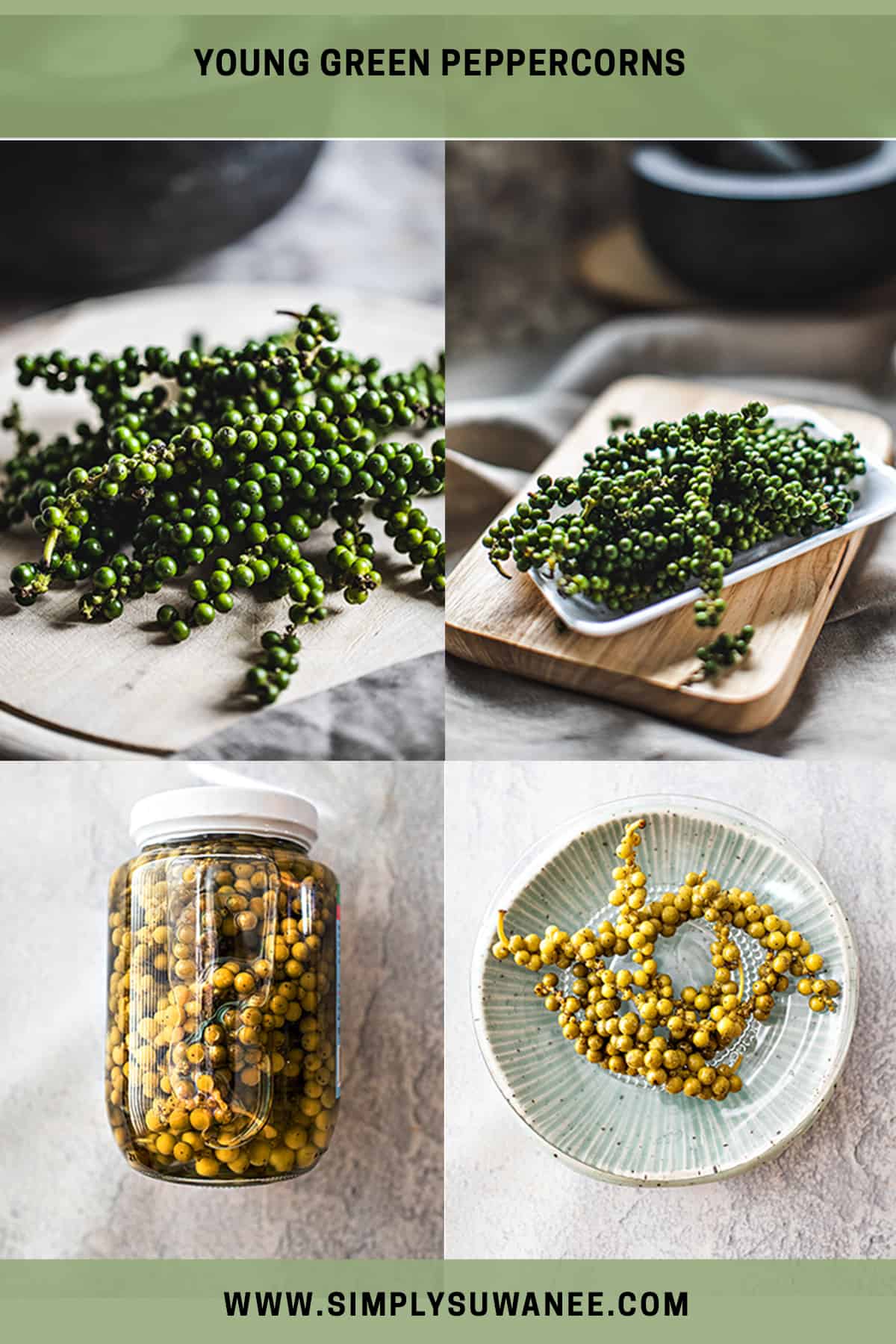
How to Make Thai Jungle Curry
Step 1. Start by heating a large soup pot or wok over medium-high heat. Add a tablespoon of vegetable oil. Once the oil is hot, stir in the Jungle curry paste, giving it a quick sauté to release its flavors.
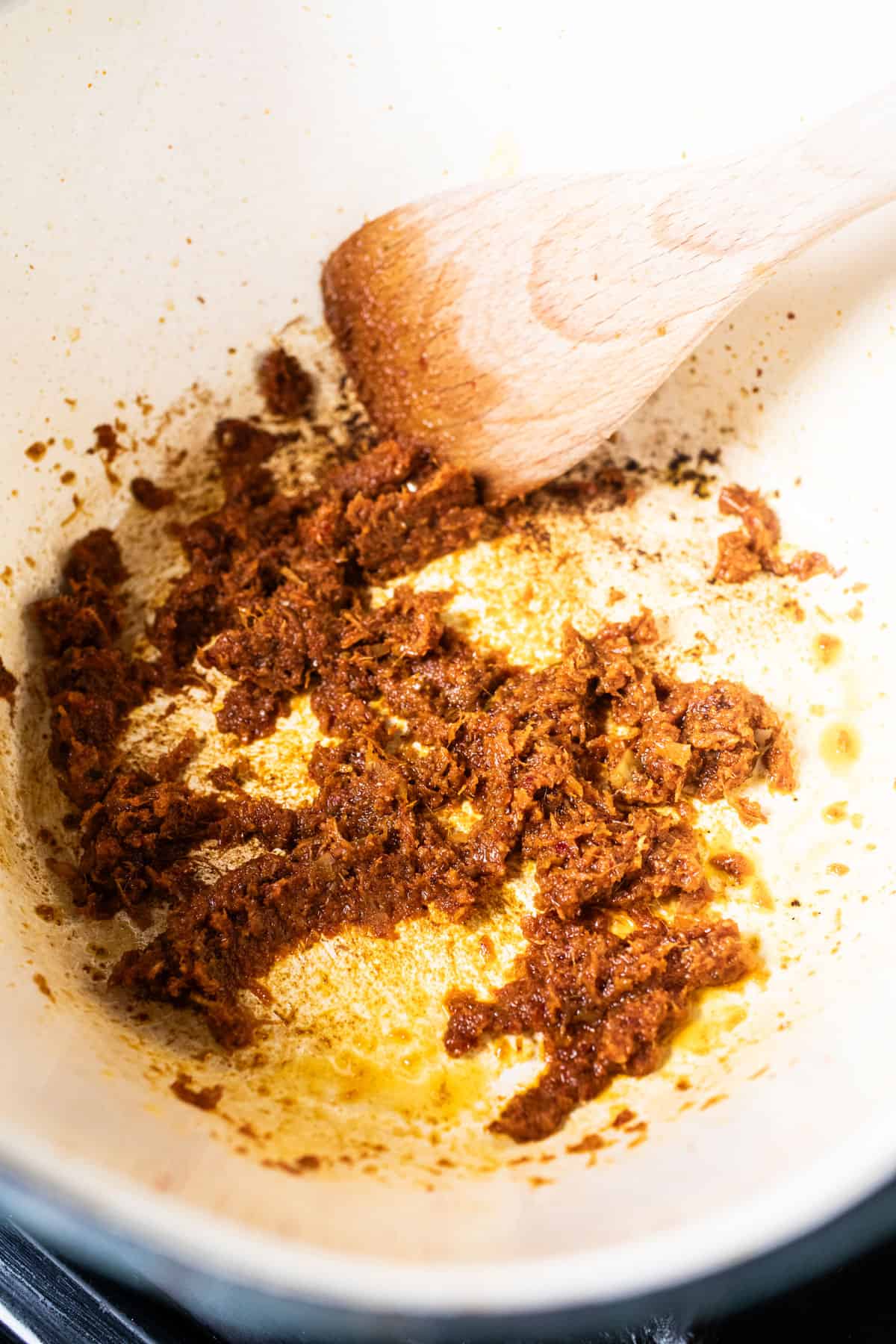
Step 2. Add broth and bring it to a boil. Stir with a wooden spoon. Add fish sauce and sugar.
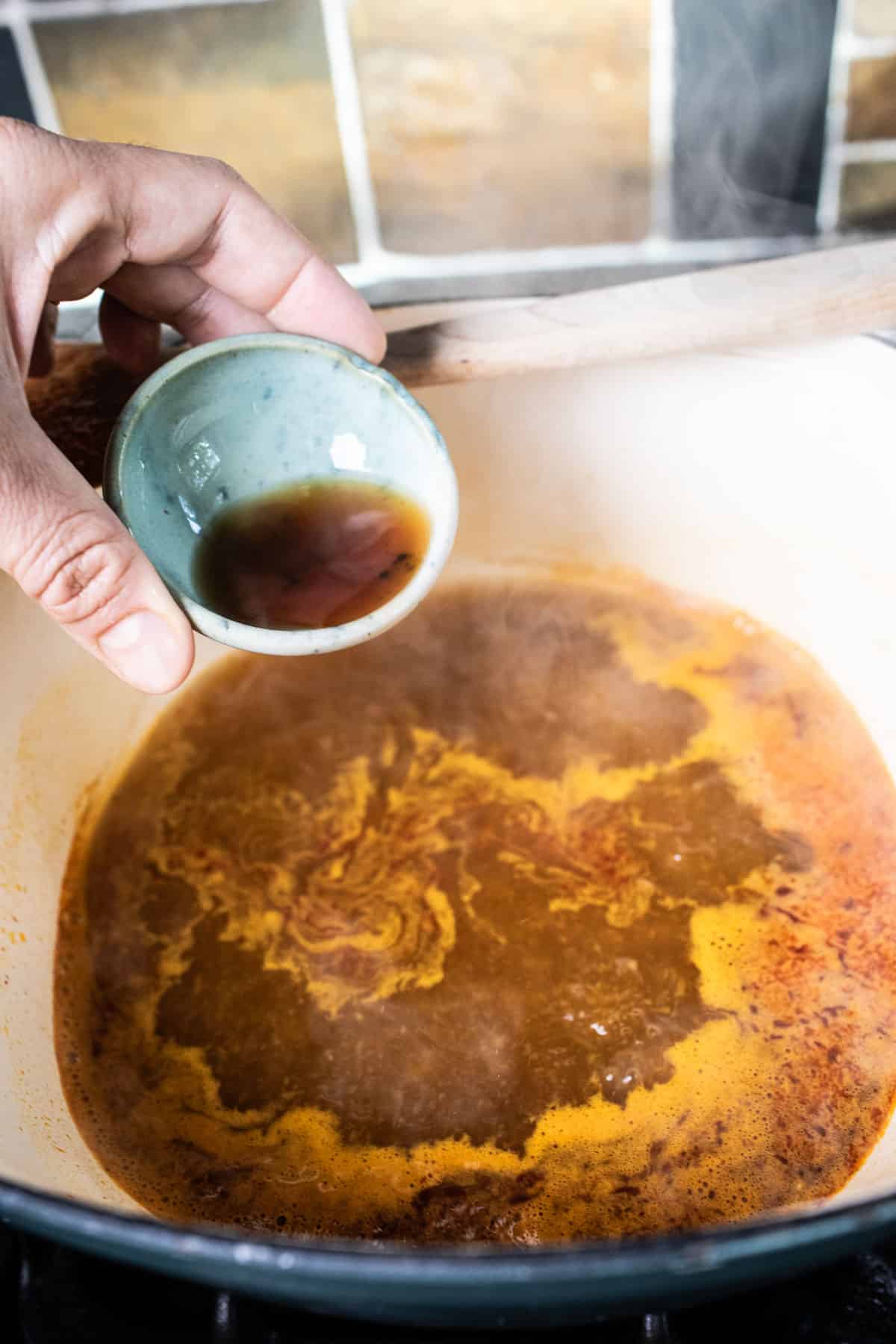
Step 3. Add the vegetables and allow it to cook for 4-5 minutes until tender.
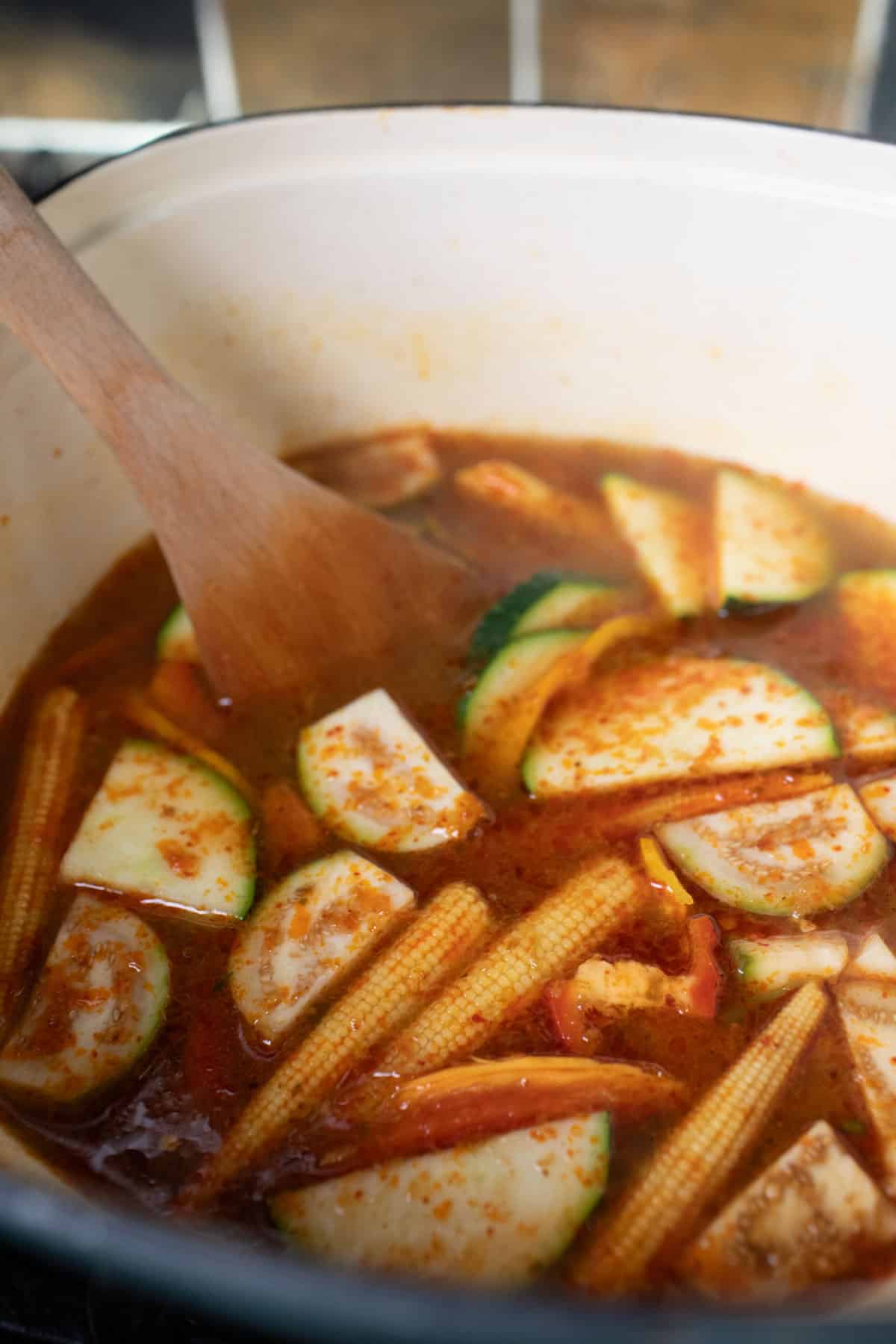
Step 4. Add kaffir lime leaves, Krachai, and green peppercorns.
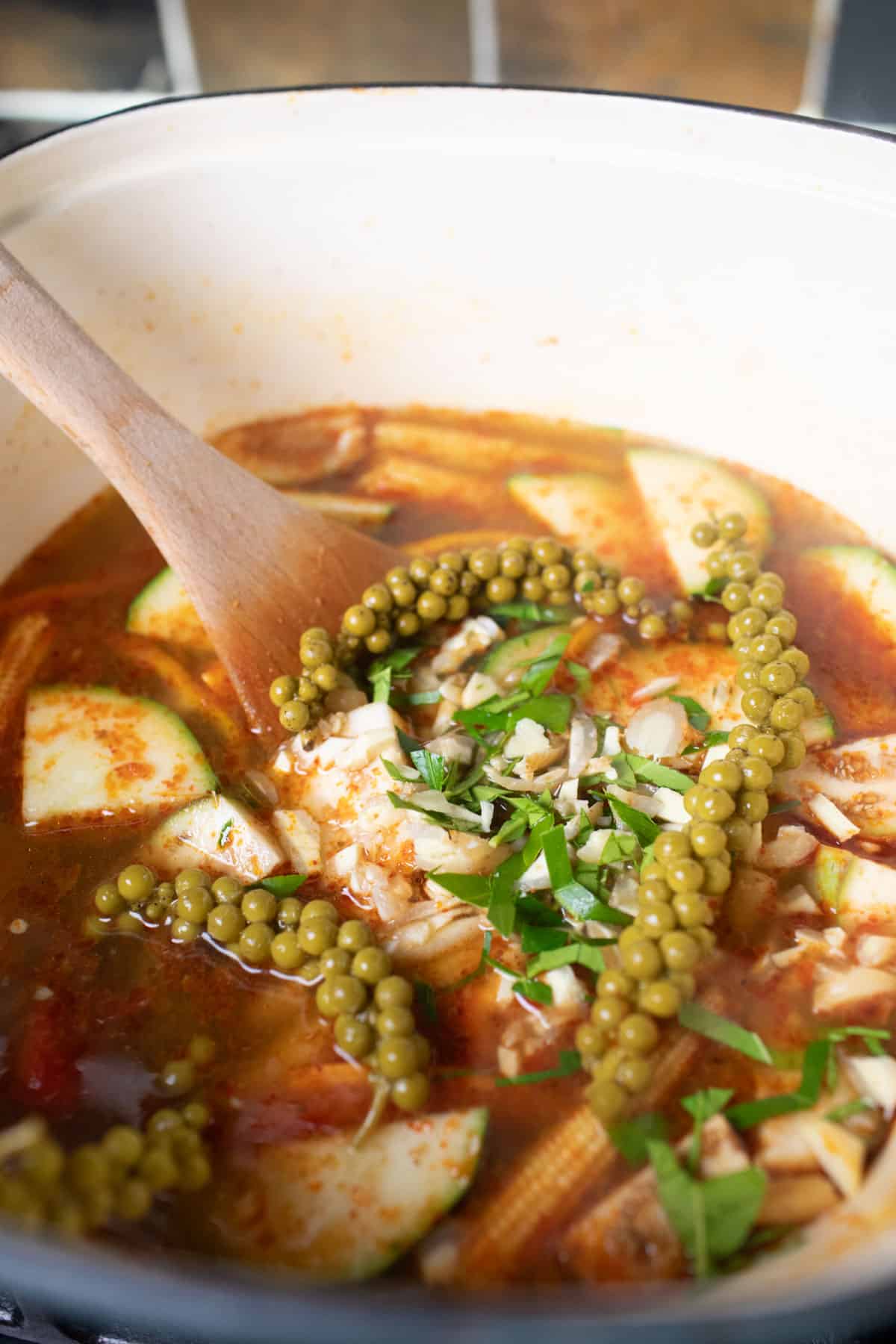
Step 5. Add the fish and cook for 4-5 more minutes.
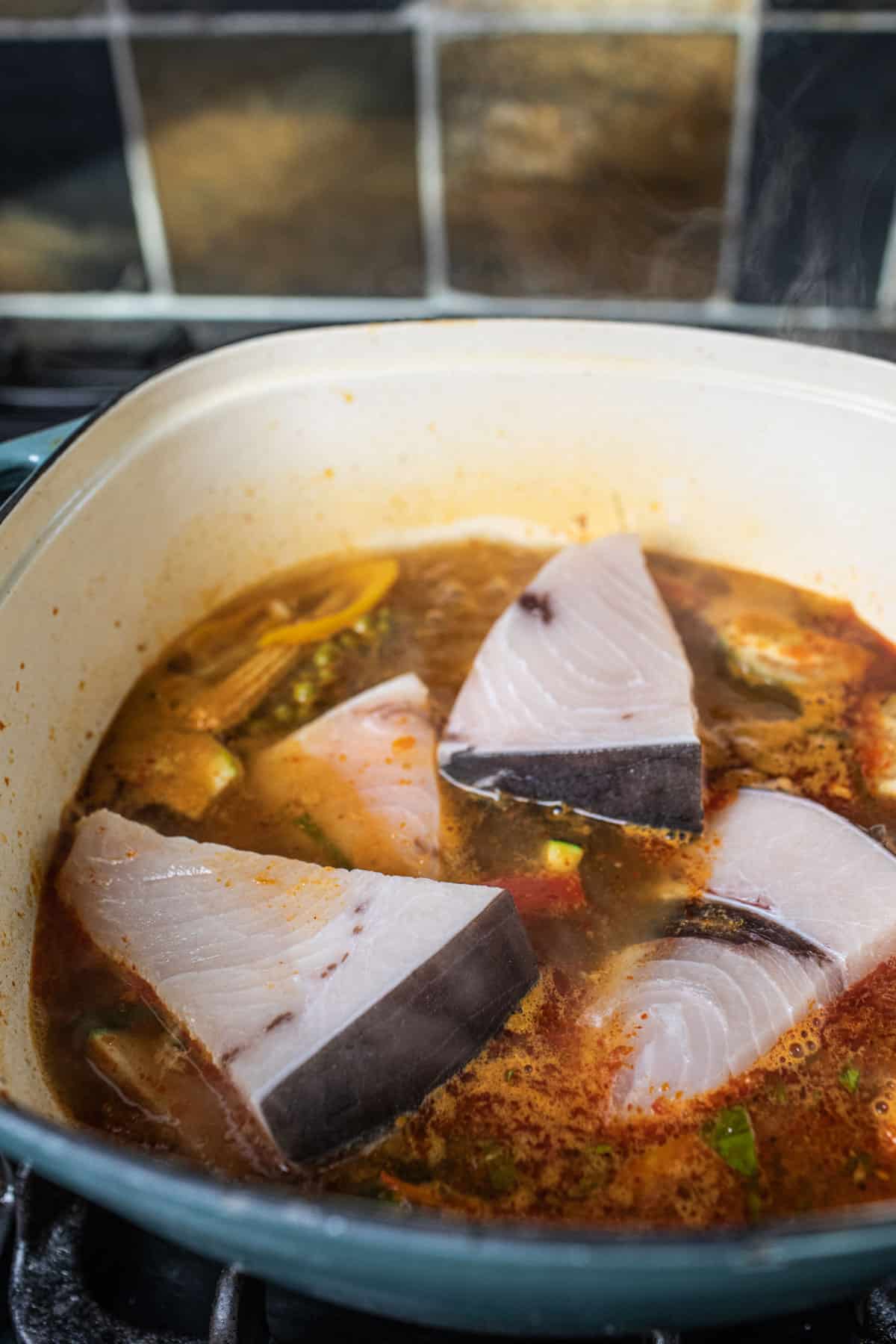
Step 6. Turn the heat off, and add holy basil to enhance the aroma.
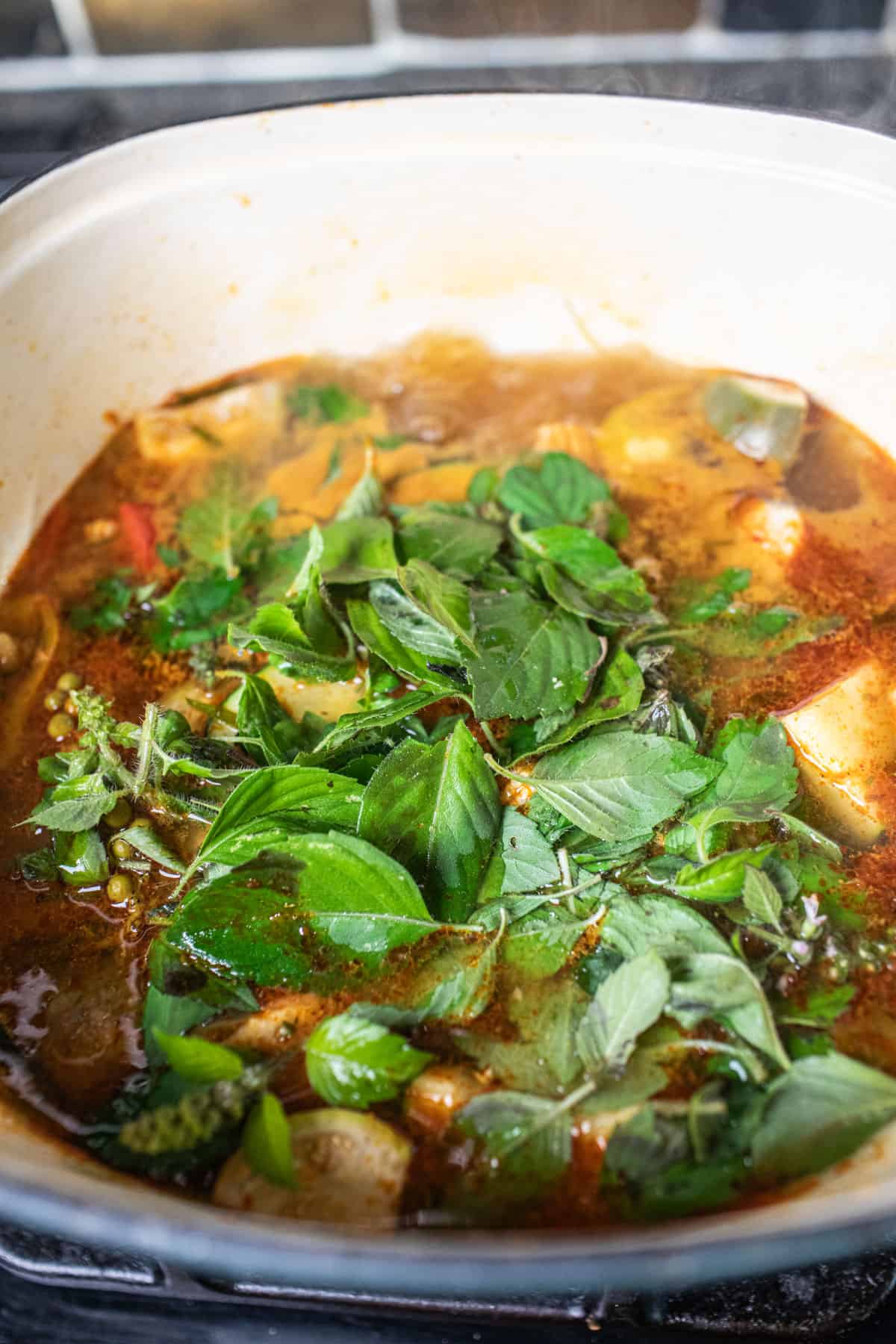
Serve your Jungle Curry over a generous bed of rice to help buffer some of the heat. Jasmine rice is recommended for pairing with this curry.
Garnishing options
- Add a dash of lime juice to your pot of jungle curry if you need a little lime zest. Or have a bowl of lime wedges for individual customization in a small bowl.
- Add toasted ground sticky rice, Khao Kua, at the end of your cooking for an added crunch to the soup, as well as helping the soup to thicken and absorb some of the heat.
Helpful Kitchen Notes
- Recommended vegetables for the Jungle curry recipe are Snake beans, green beans, bamboo shoots, bell peppers, baby sweetcorn, tomatoes, or sweet onions.
- If you can find Thai pea eggplant, the smallest round eggplants the size of an M&M, at the Asian markets, grab those and use them in your curry.
- The basil is used to add at the end of cooking and let residual heat wilt it. If adding it too soon, the basil leaves will lose their fragrance and flavor.
Storing Leftovers
- Jungle curry stores well as leftovers for up to 3 days.
- Freezing the curry is also an option. Use glass jars and leave about 1 ½ inches at the top of the jar for air bubbles and glass expansion. Freeze your curry for up to 3 months.
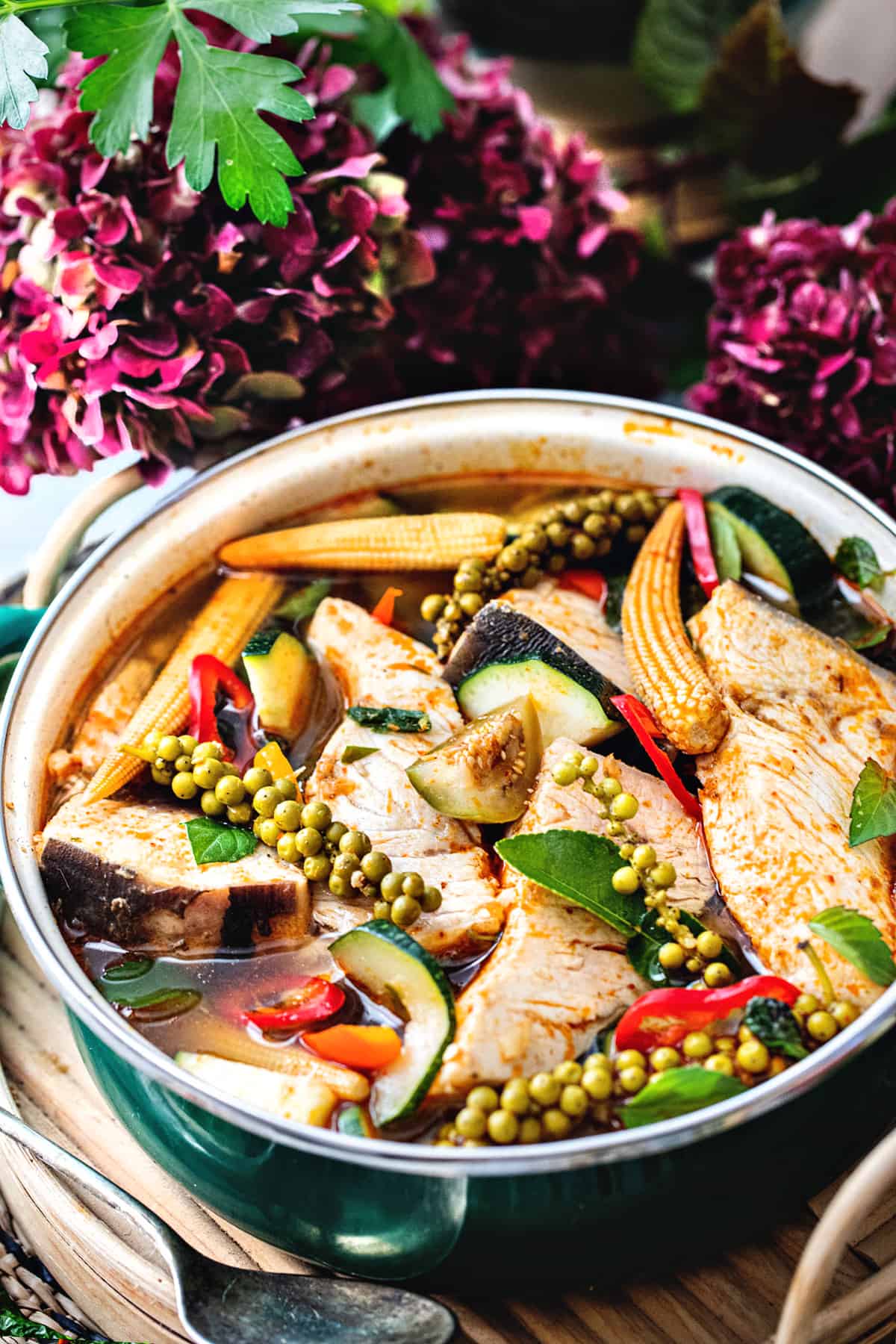
Frequently Asked Questions
No, Jungle Curry and red curry are distinct. Jungle curry is spicier and typically doesn't use coconut milk, while Red Curry is milder and uses coconut milk for a creamier taste.
Jungle Curry Paste can be found in many Asian grocery stores or purchased online. Look for reputable brands to ensure authenticity.
Jungle Curry can be a healthy choice when made with lean meats and loaded with vegetables. Its aromatic herbs and spices offer flavor and potential health benefits.
Jungle curry is a spicy Thai curry made with various ingredients such as Thai herbs, vegetables, and meat or seafood.
It is called jungle curry because it originated from the remote regions of Thailand, where people used whatever ingredients were available in the jungles of Thailand.
In Thai, jungle curry is known as "Gaeng Pa" or "Gaeng Pah."
The taste of jungle curry is often described as intensely spicy, aromatic, and full of flavors from the various herbs and spices.
Yes, jungle curry is known for its heat. It is considered one of the spiciest Thai curries.
The spiciness of jungle curry can vary depending on the recipe and the chili used, but it is generally known to be very hot.
More Thai Curries You'll Enjoy
- Thai green curry with chicken. Use Thai green curry paste to elevate your curry even more.
- Choo Chee curry with salmon in a creamy curry sauce.
- Thai Pad Prik King curry with shrimp and green beans.
The Real Story of Jungle Curry
Jungle curry is the spiciest curry in the Thai food repertoire with fresh and dried chilies, and no coconut milk is used. It's more like a soup or watery curry.
Despite the popular belief that it's called Jungle curry because of all the hodgepodge of vegetables used to make it look like a jungle, there's a history of where that concept is from. Though many types of vegetabbles can be used in modern days Thai cooking in Thailand as those jungles are fast disappearing.
In rural Thailand, people living near the jungle would hunt for food like wild boars, fish, frogs, and river prawns. They would bring the gathered goods home to make curries, soups, or stir-fries for their families.
I can vouch for these stories as I had first-hand experience foraging for food from the nearby jungle with my Thai family. Growing up near a lush jungle for 13 years, we looked for herbs, plants, edible flowers, and leaves and combined those with homegrown vegetables and herbs to make the tastiest and spiciest curry.
Fresh fish caught from our pond with a net was typically the meat of choice. But over time, the story of this Thai curry has changed and evolved, and it's inaccurate.
That's that for the very brief history of jungle curry. Enjoy and let me know how yours turn out!
**Love a recipe you've tried? Please leave a 5-star rating in the recipe card below and a review in the comments section further down the page. Or follow me on Facebook, Pinterest, or Instagram!**
Print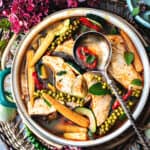
Thai Jungle Curry (Gaeng Pa)
- Total Time: 25 minutes
- Yield: 5-6 servings
- Diet: Gluten Free
Description
If you like spicy Thai curries, you'll love Thai Jungle Curry. It uses a special Thai Jungle curry paste that adds many flavors and smells amazing. You can make it with fish, seafood, chicken, beef, or vegetarian. There's something for everyone's taste buds. Give it a try and make your meals extra special!
Ingredients
- 2 tablespoons oil
- ¼ cup Thai Jungle curry paste. I highly recommend making your Thai Jungle curry paste using my recipe. For a store-bought paste, I recommend this Lobo brand.
- 4 cups broth, use low or no salt. Chicken or vegetable broth is best.
- 4 Thai eggplants, green round ones, quartered. They are sometimes labeled Thai aubergines in the Asian market. Chinese eggplants, purple or green varieties, can be used if Thai eggplants are unavailable.
- 1 cup baby corn. Leave whole or cut in half. Up to you!
- 1 cup zucchini, winter melon, Asian gourd, or Kabocha squash. Slice into bite-size pieces.
- ½ cup red pepper. Slice into small pieces, round or long, whichever you prefer. I used a long red Marconi. You can use sweet bell peppers. If feeling adventurous, use red serranos or Long Thai chilies for added heat.
- 1 pound swordfish. I used the frozen swordfish fillet from Trader Joe's for mine. Any firm white fish will work.
- ⅓ cup Krachai. Sliced long and thin. Also called finger roots Chinese keys, or lesser ginger. See the image in the blog post above.
- ¼ cup Thai green peppercorns. About 3-4 long stems. See the image in the blog post above.
- 2 kaffir lime leaves. Julienned into long, thin slices.
- 1 tablespoon sugar
- 3 tablespoons fish sauce
- 1 ½ cup holy basil leaves. Substitute Thai basil or regular basil if holy basil is not available.
Instructions
- Start by heating a large pan or wok over medium-high heat. Add a tablespoon of vegetable oil. Once the oil is hot, stir in the Jungle curry paste, giving it a quick sauté to release its flavors.
- Add the vegetables and allow it to cook for 4-5 minutes until tender.
- Add kaffir lime leaves, Krachai, and green peppercorns.
- Add the fish and cook for 4-5 more minutes.
- Turn the heat off, and add holy basil to enhance the aroma.
Serve your Jungle Curry over a generous bed of rice to help buffer some of the heat. Jasmine rice is recommended for pairing with this curry.
Notes
- Recommended vegetables for the Jungle curry recipe are Snake beans, green beans, bamboo shoots, bell peppers, baby sweetcorn, tomatoes, or sweet onions.
- If you can find Thai pea eggplant, the smallest round eggplants the size of an M&M, at the Asian markets, grab those and use them in your curry.
- The basil is used to add at the end of cooking and let residual heat wilt it. If adding it too soon, the basil leaves will lose their fragrance and flavor.
** Thank you so much for visiting my blog! This is truly a passion for me. If you have enjoyed these recipes and appreciate the hard work I put into them, I would love it if you would share them with your friends! Your recommendation is the highest review I could hope for, and I’d appreciate it! **
- Prep Time: 15
- Cook Time: 10
- Category: Curries
- Method: stovetop
- Cuisine: thai
Related Recipes
Looking for other recipes like this? Try these:

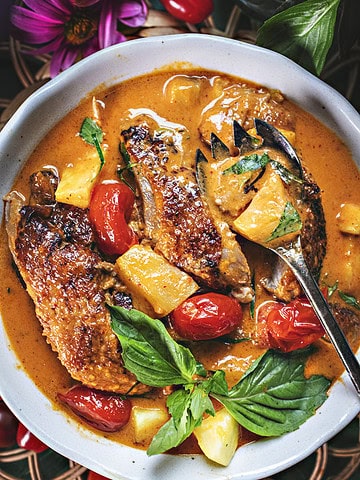
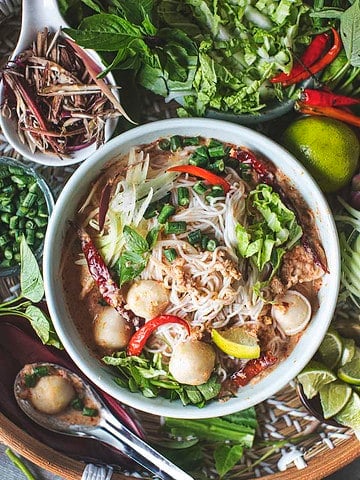
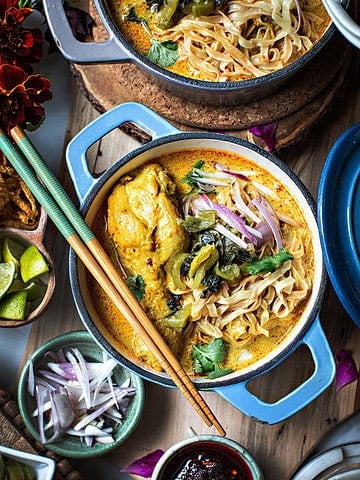
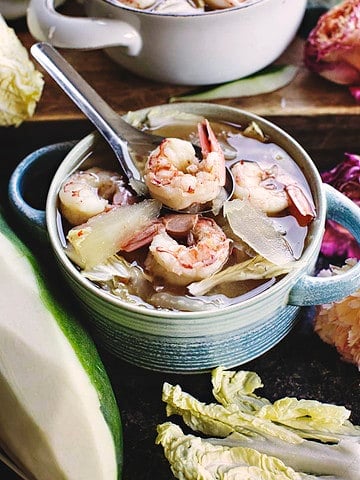
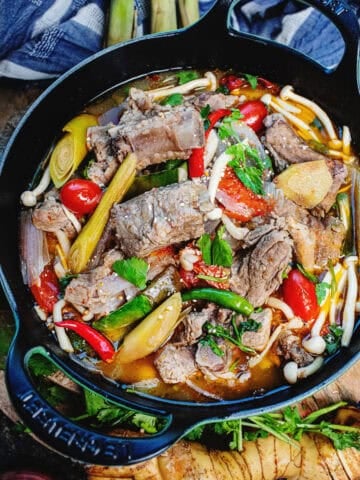
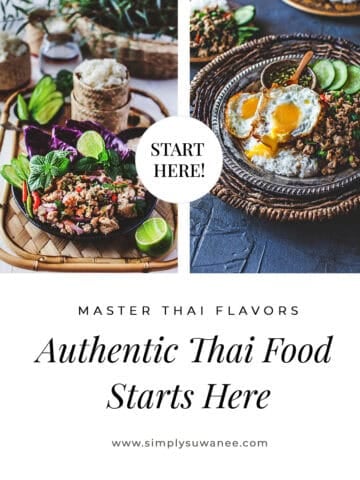
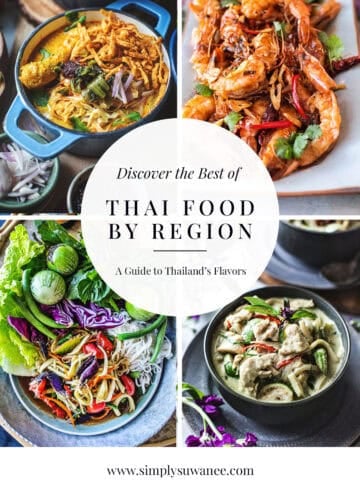
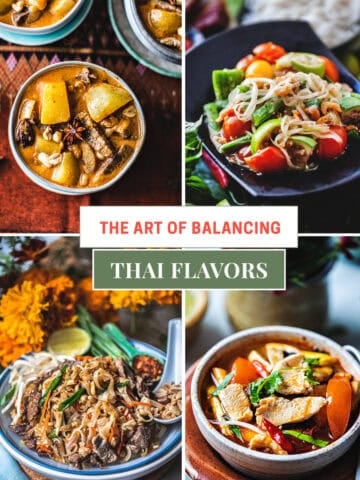
Suwanee says
I'm happy to hear it Judith. Feel free to tone down the spices as needed!
Judith says
Yummy!! Spicy but love the flavors! Next time will try it with shrimp. I love that I can use whatever vegetables I have sitting in my fridge for this. Thank you for the recipe!
Suwanee says
Spicy and bold are good together, so happy you loved it!
Angie K says
So much flavor and I would say spicy and bold:). I love that you can add whatever vegetables you have and make this recipe your own. I love bamboo shoots in everything so I will be adding those also next time. Once again, a amazing dish:)